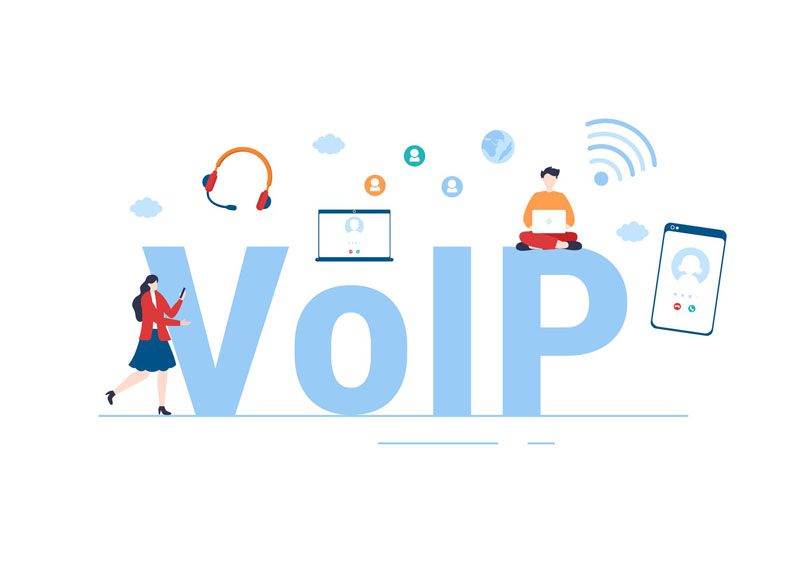Even though WebRTC is becoming increasingly popular, people are worried about its safety. Even though technology makes communicating easier with fewer resources, most businesses still have to decide whether or not to use it when developing VoIP applications. They often look for other options that are just as good.
But research has shown that the best choice is to use the WebRTC application. Whether you’re an IT professional who wants to use real-time technology in your company or a developer who wants to use it in an app you’re making, you’ll need to know about it. This essay will discuss several typical worries about WebRTC security and describe why this technology is the safe VoIP protocol.
Typical WebRTC Security Problems
The WebRTC technology is built into the browser, so you often have to share your screen and let them use your camera and microphone when you want to talk to someone. Because of this, companies often worry about the following:
Data Stealing
Data theft involves taking information from data warehouses, devices, and servers. This kind of corporate theft is a big problem for businesses of all sizes because it can arrive both within and outside the company. Data theft is one of the most important problems businesses face now.
If someone has access to the microphone, they can easily record the conversations. You can easily spy on them with the camera. People can see what they share by accessing their screens from far away. It’s one thing to enjoy the great features of WebRTC, but nobody wants their device to be spied on.
Breaking Privacy
Businesses also worry about their privacy being broken. WebRTC makes it possible to get things such as private IP addresses and other important device data. It makes it easy for some people to get into your devices and use the information on them to target ads. This is something that ad networks do all the time.
For instance, a user’s home WiFi shouldn’t share its internal IP address with other devices on the same local network. If it gets out to the outside world, it can be used as an even more unique identifier than the external IP address that is supposed to be shared with other internet-connected devices. This makes it hard to protect and keep online privacy.
It might not seem like a big deal to be able to see IP addresses on the internet. Other tracking and fingerprinting methods make it hard for users to get their IP address information. This is particularly true if a user quietly and unintentionally gives out their IP address, even though they have taken steps to protect their privacy and safety.
How is WebRTC the most secure VoIP protocol?
Even though we were worried about WebRTC in this blog, it is a very safe protocol. It is the safest option for developing real-time media streaming and VoIP apps on the market right now. WebRTC provides the most secure alternative to other protocols for building WebRTC apps for 3 reasons:
Security is important to browser makers.
All major browser makers, like Apple, Google, Microsoft, and Mozilla, take security seriously. This is the main reason why application developers should use WebRTC. All of them put out new news every 6 to 8 weeks. Any WebRTC security problems that come up are dealt with right away by the vendors.
So, you can be sure that if a security hole is found, the browser makers will fix it in the next update. This will keep your device secure at all times. There are strict security rules and Internet specifications that browser makers must follow, such as those for this same WebRTC protocol. It is one of the most important security features at the level of the Operating System. It limits which WebRTC apps can use the camera.
Competition between major browsers such as Chrome, Firefox, Edge, Safari, and others has made them aware of their user’s privacy and security needs, especially when building WebRTC applications. Controls for security and privacy include the following,
- HTTPS: To use WebRTC features, you need to use HTTPS
- Media access permissions: Before users can use the camera, mic, or screen-sharing video, they must give each site permission.
- Protection against IP leaks: There are ways to share IP address information that help avoid confidentiality and tracking problems.
Major browsers use different ways to implement these features, but most are the same.
Is WebRTC Security Sufficient?
WebRTC is used by billions of people every day. Its security isn’t perfect, but it often uses security that already exists by needing WebRTC security at a low level. The safest VoIP Protocol method gets good reviews from a large and active community.
WebRTC doesn’t break the rule that no software system is completely safe. For example, a Google Project Zero security analyst just released a major attack that works with 7 of the 14 most popular Android WebRTC apps.
On the one hand, it’s awful that a problem this serious could have gotten into programs that billions of devices use. But it’s good that thorough research on WebRTC security flaws has been done inside the public domain and that all of these apps, except for one, fixed their problems quickly.
- Calls for encrypted signaling.
- Uses insertable flows on media servers to make end-to-end encryption possible.
- It might be secure, but the system could still be hacked if your web or mainstream press servers aren’t safe.
- Approaches from different points of view.
Conclusion
WebRTC is safe, or at least safer than other VoIP options. Users’ safety is very important to the technology, so it takes all the necessary steps to protect it. So, it would help if you employed it to make VoIP applications and applications that stream videos. But be careful when choosing a company to develop WebRTC applications.
A vendor will do the same amount of damage if it has little experience installing technology or if it chooses technology that isn’t safe. So, choose someone with some experience who knows the WebRTC implementation and architecture well and can avoid common but important WebRTC mistakes.



